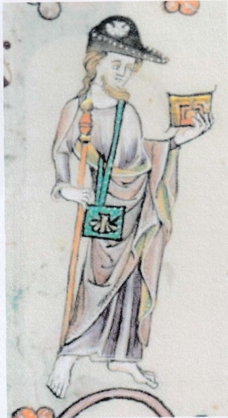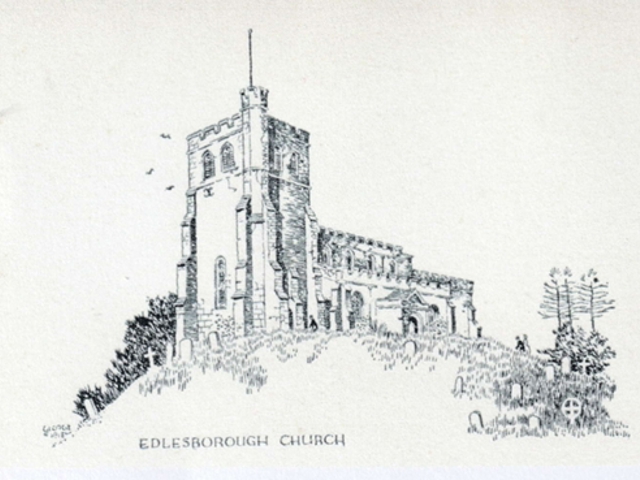Building the medieval church
When our church was built
The earliest parts of our church date from the late 1200s. This is seen in the nave arcades also in the chancel which has two windows of this period, so it is possible that much of the rest of the church dates from the same time.
In 1338, Thomas de Boteler founded the Chantry of Our Lady and All Saints in the north transept. The tower was added in about 1340 and to make room for it on the hill-top, the nave was shortened. This is why the arcades end abruptly at the west end.
It was the skills of the craftsmen of the 1400s which gave the church much of its present appearance and character. They heightened the nave walls, forming the present clerestory (windows at high level). The porches were added at that time, also the font, screen, pulpit and stalls; all of which fortunately surived alterations or destruction at the Reformation in the mid 1500s, or by the Puritans in the 1640s. After a disastrous fire in the tower in 1828, the church was restored over many years, but fortunately kept its medieval character. The chancel flooring, some of the stained glass and the wall paintings in the Nave date from this time.
Machinery
Some machinery existed to help but most of the effort was PEOPLE POWER and many local labourers would have been employed to carry out the unskilled work
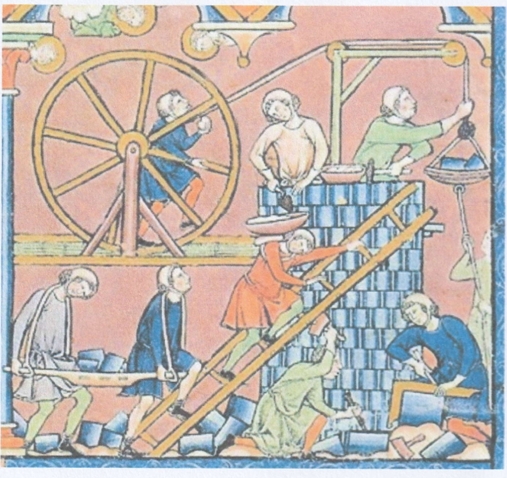
Mining the stone
The church was built in the early 1200s of clunch, a soft limestone mined locally in Totternhoe. The walls have flint, tile and brick inserts but some of these are of a later period.
Clunch
Clunch is a word that was applied to particularly hard chalk that ran all the way from the Chilterns, through Beds. into Cambs. Its location was easily identifiable because a spring line formed where the stone occurred. The availability of clean water led to the establishment of small settlements, with the clunch being used as a building stone as there was nothing else available. Possibly the first use of chalk as a building stone was in the village of Totternhoe, where there was a Roman villa. After the Romans left Britain in the fifth century, quarrying essentially came to a halt until the invasion of the Normans in 1066, when it was kick-started again by the great church and castle building of the period. It is in the surviving remains of such buildings that we find Totternhoe stone today. It is still used for repairs to these buildings. When used as internal carved decoration, it has remained in good condition for centuries. Old decorative carving is to be found in St Albans Abbey and in the altar screen of Westminster Abbey.
Peter Kahn, when he visited the quarry in 1748 , interviewed quarryworkers. The stone, when it was first hewn, was of a grey or clay colour, and so soft that it could be cut with a knife as easily as a hardened or dry pot-clay. When it had come up to the surface and lain for a time in the open air it became very white, although not so white as chalk, and it always hardens more and more as it gets older.
Flint
Flint is a sedimentary form of the mineral quartz and occurs chiefly as nodulaes and masses in sedimentary rocks, such as chalks and limestones. Inside the nodule, flint is usually dark grey or black, green, white, or brown in colour, and has a glassy or waxy appearance. A thin, oxidised layer on the outside of the nodules is usually different in colour, typically white and rough in texture. The exact mode of formation of flint is not yet clear, but it is thought that it occurs as a result of chemical changes in compressed sedimentary rock formations. One hypothesis is that a gelatinous material fills cavities in the sediment, such as holes bored by crustaceans or molluscs and that this becomes silicified.
Sources
- Wikipedia
- The Stone Specialist- Great British Stone: Totternhoe Clunch, by Eric Bignell, August 2015.
- Disused Stations - Site Record - Totternhoe Quarries
- From - Totternhoe Stone Quarry by Pehr Kalm 1748
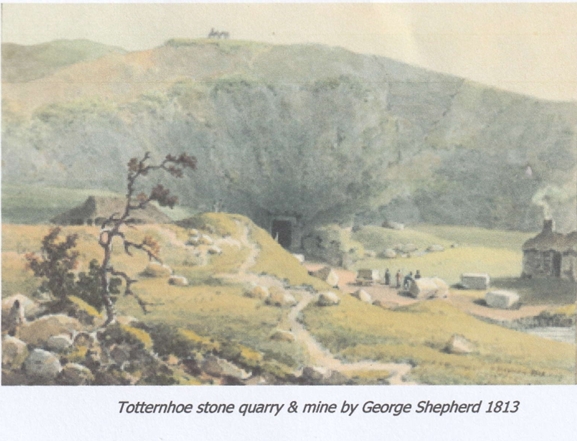
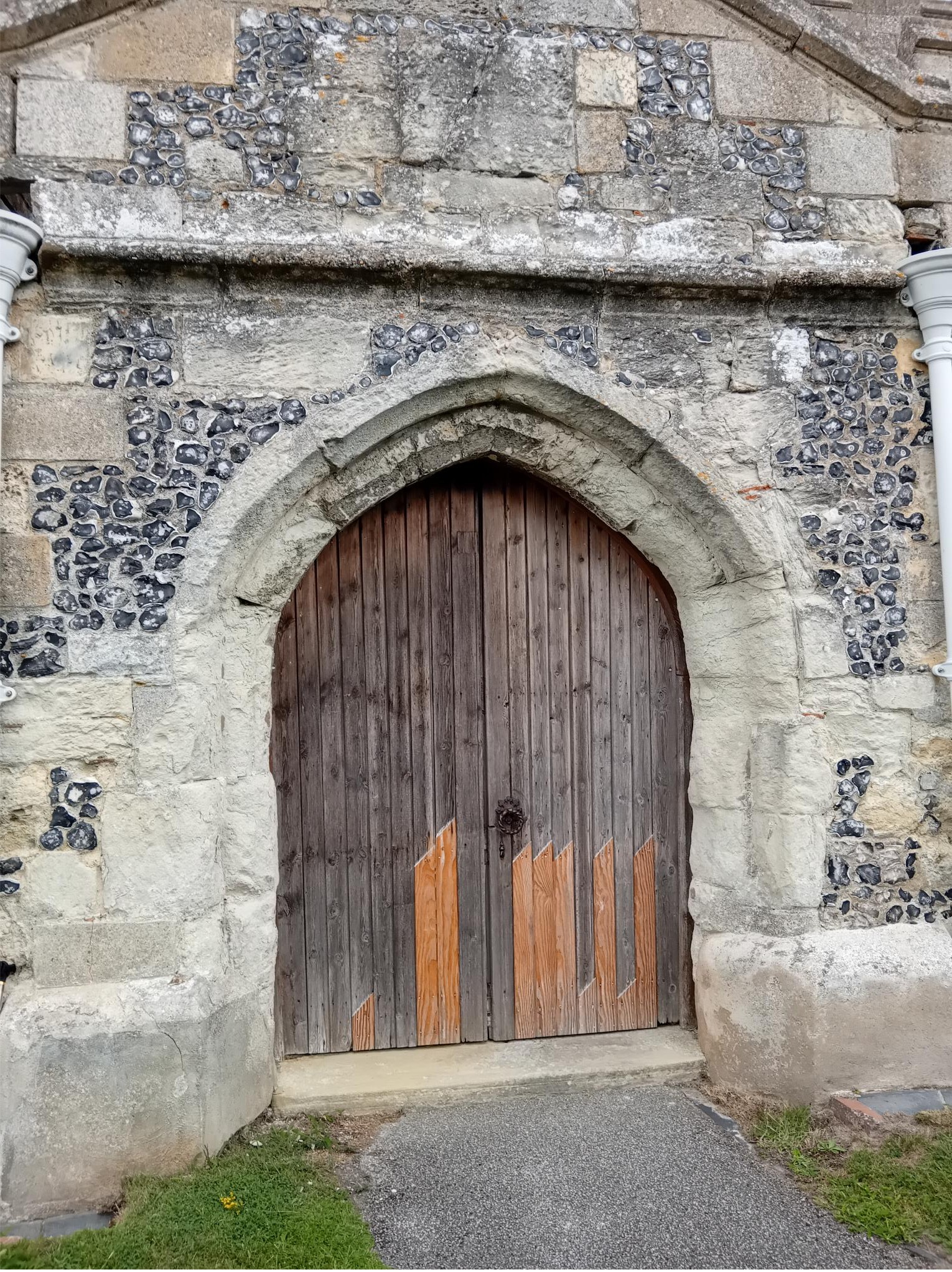
Carting the stones
The stones were often cut and shaped in the quarry but the road to Edlesborough church was uphill all the way!
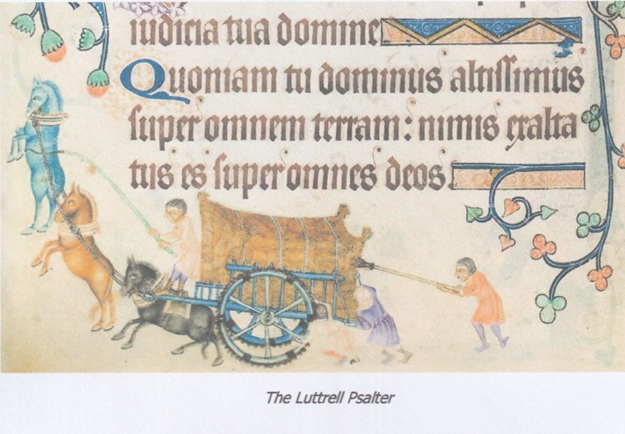
Building the walls
Stone cutters and mason were skilled workers and it is thought that groups of itinerant masons would move from church to church. Evidence for this exists in the very similar styles of building and caruing that are to be found in local churches.

Inner & outer walls of cut stone were built and in-filled with rubble. Scaffolding on the inside grew as the walls grew.

Working Methods
These illustrations from 13h century manuscripts about the building of St Albans Abbey show some of the tools and machinery available.
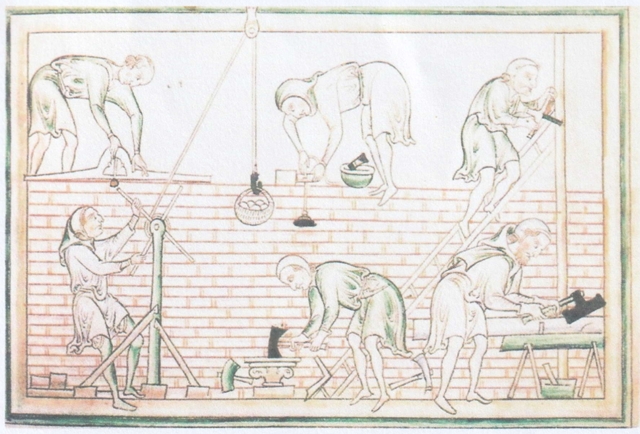

To the Greater Glory of God
Most of the people who started to build a large church or cathedral would not live to see it completed. But to be involved in building a church was an act of Faith and a desire to honour God and reflect his glory. The twelfth century was a time in this country when there was an explosion of building churches in stone and wishing to encourage this, the Church granted those involved in the financing and building of a church an Indulgence (remission of guilt for their sins which might have kept them in Purgatory for a long time after death).
This was probably an easier way to gain spiritual benefit than going on an arduous pilgrimage or fighting on a crusade!
